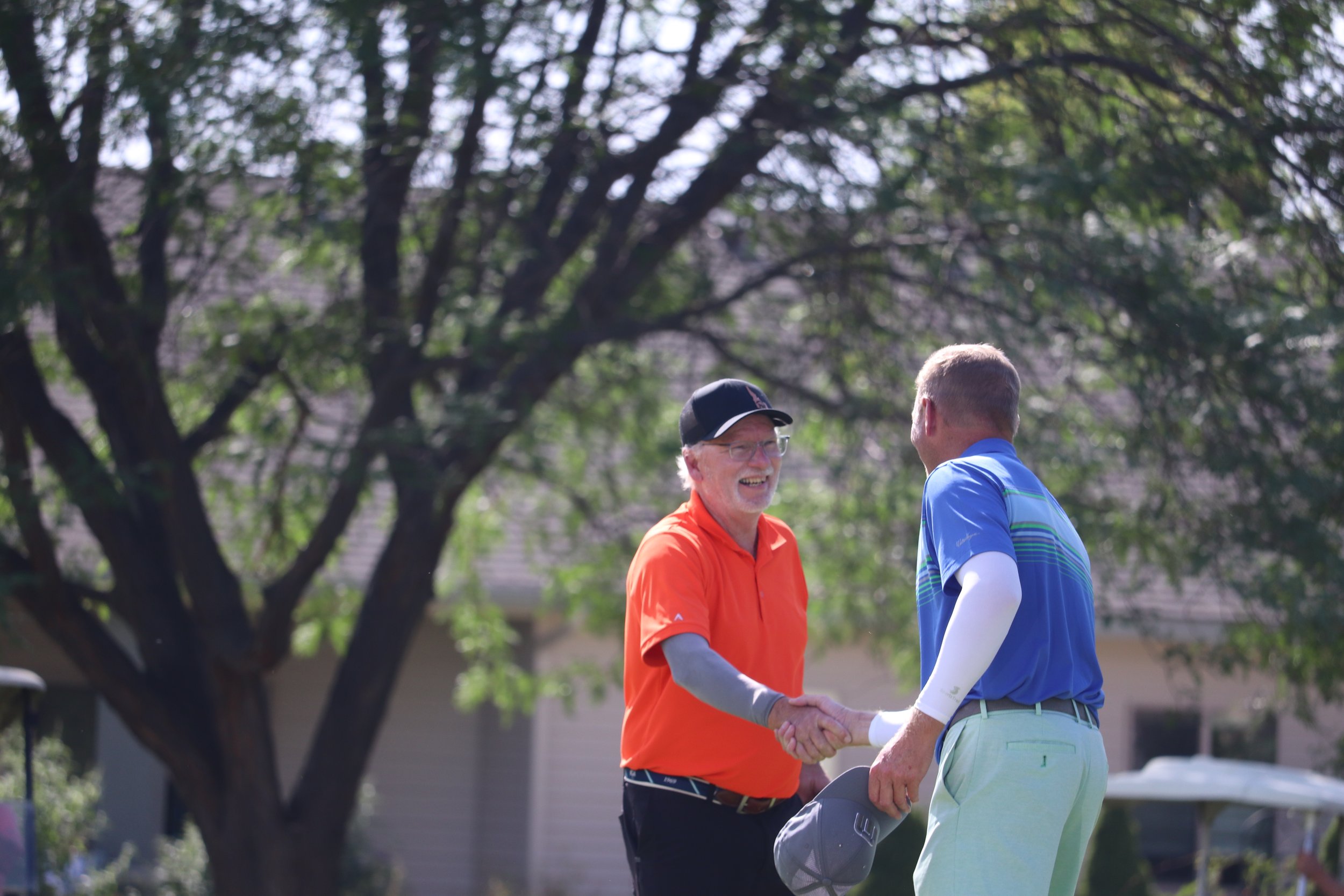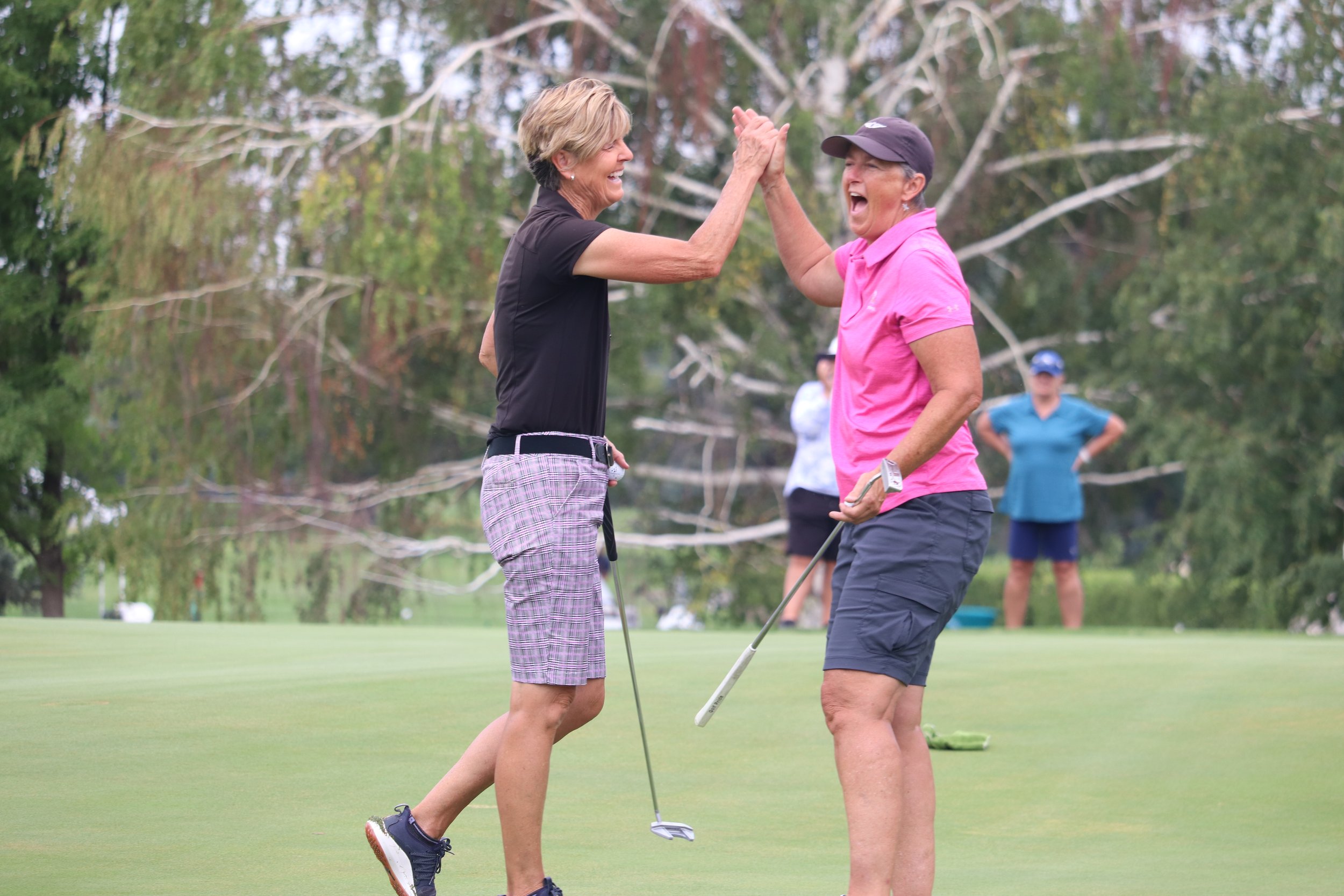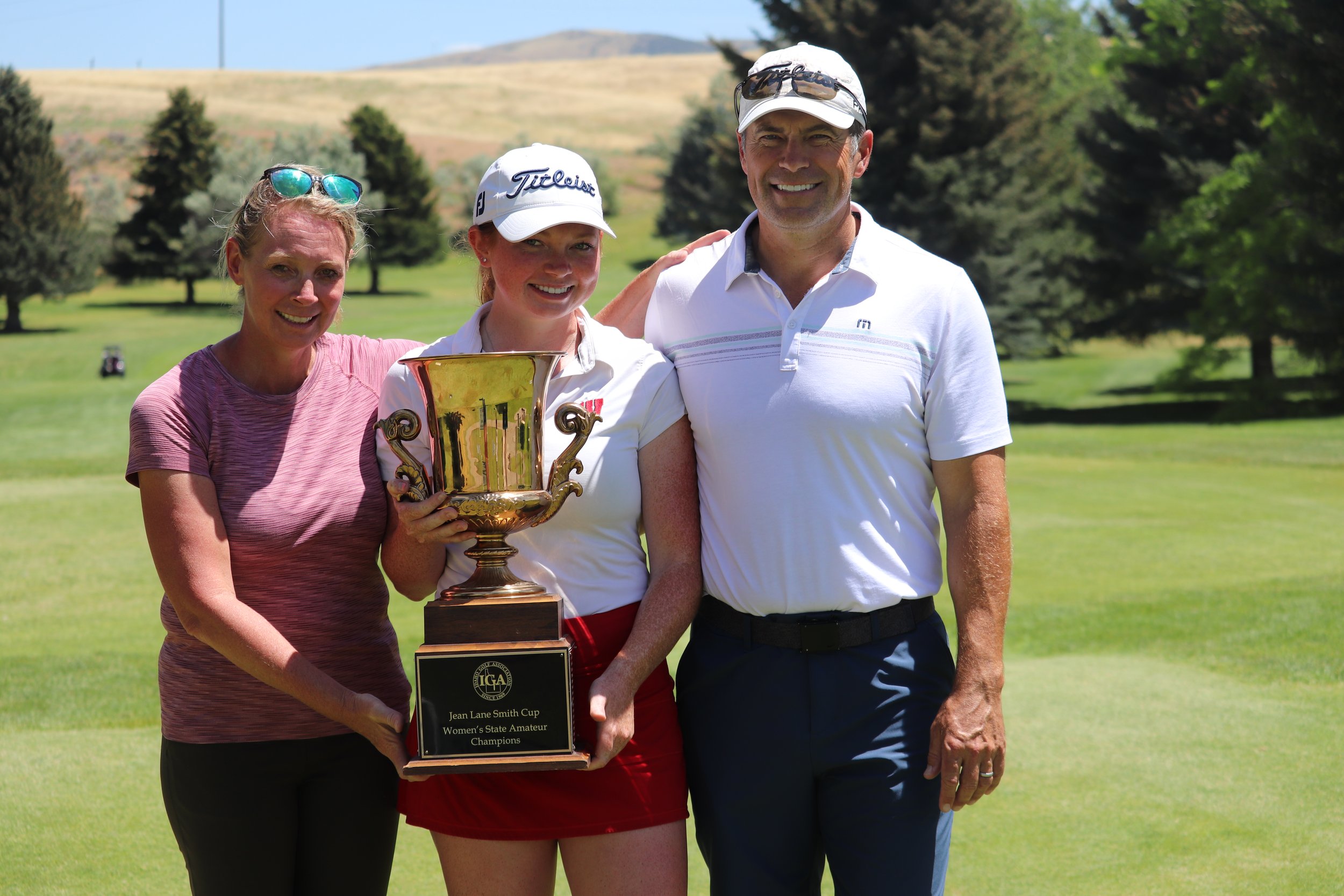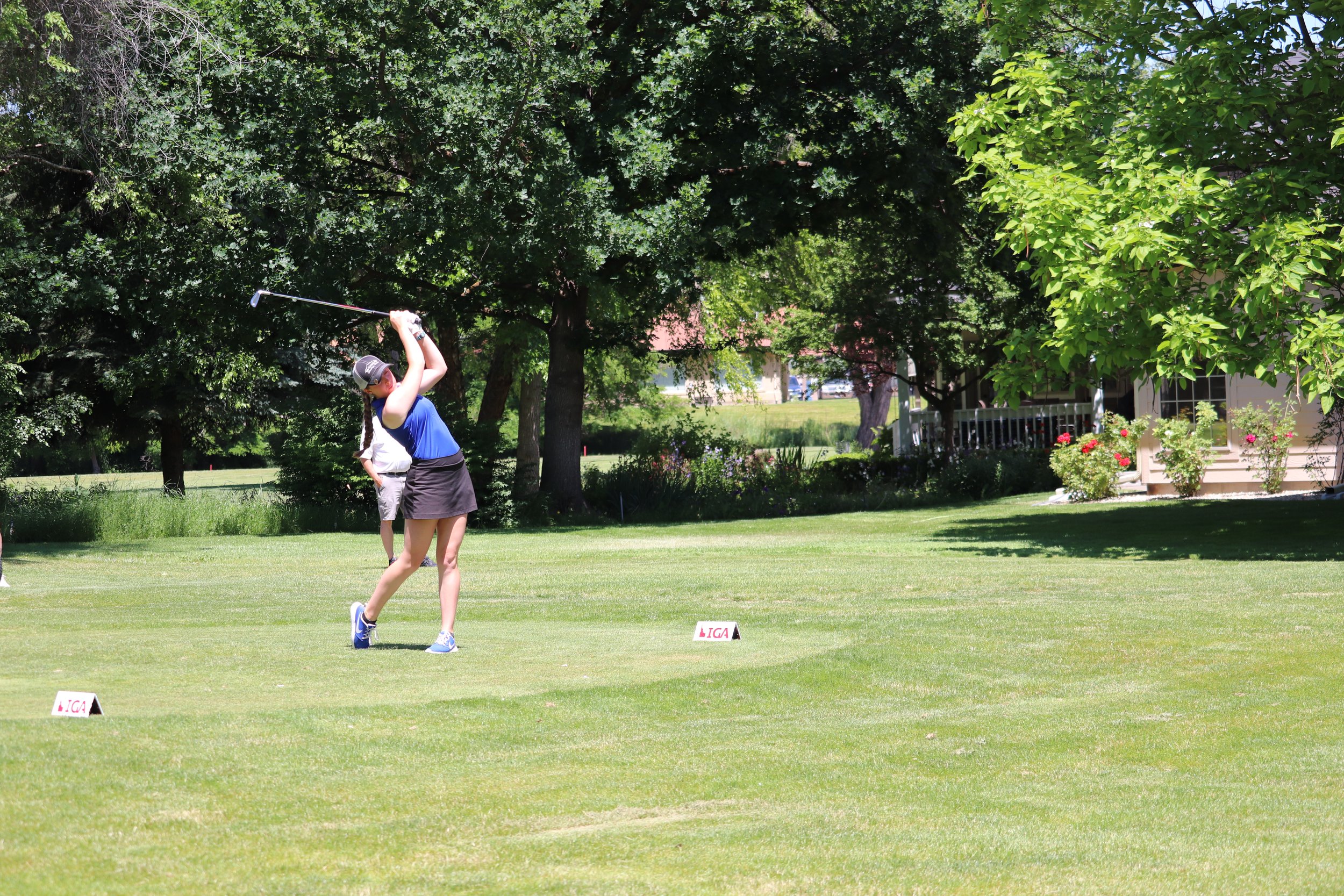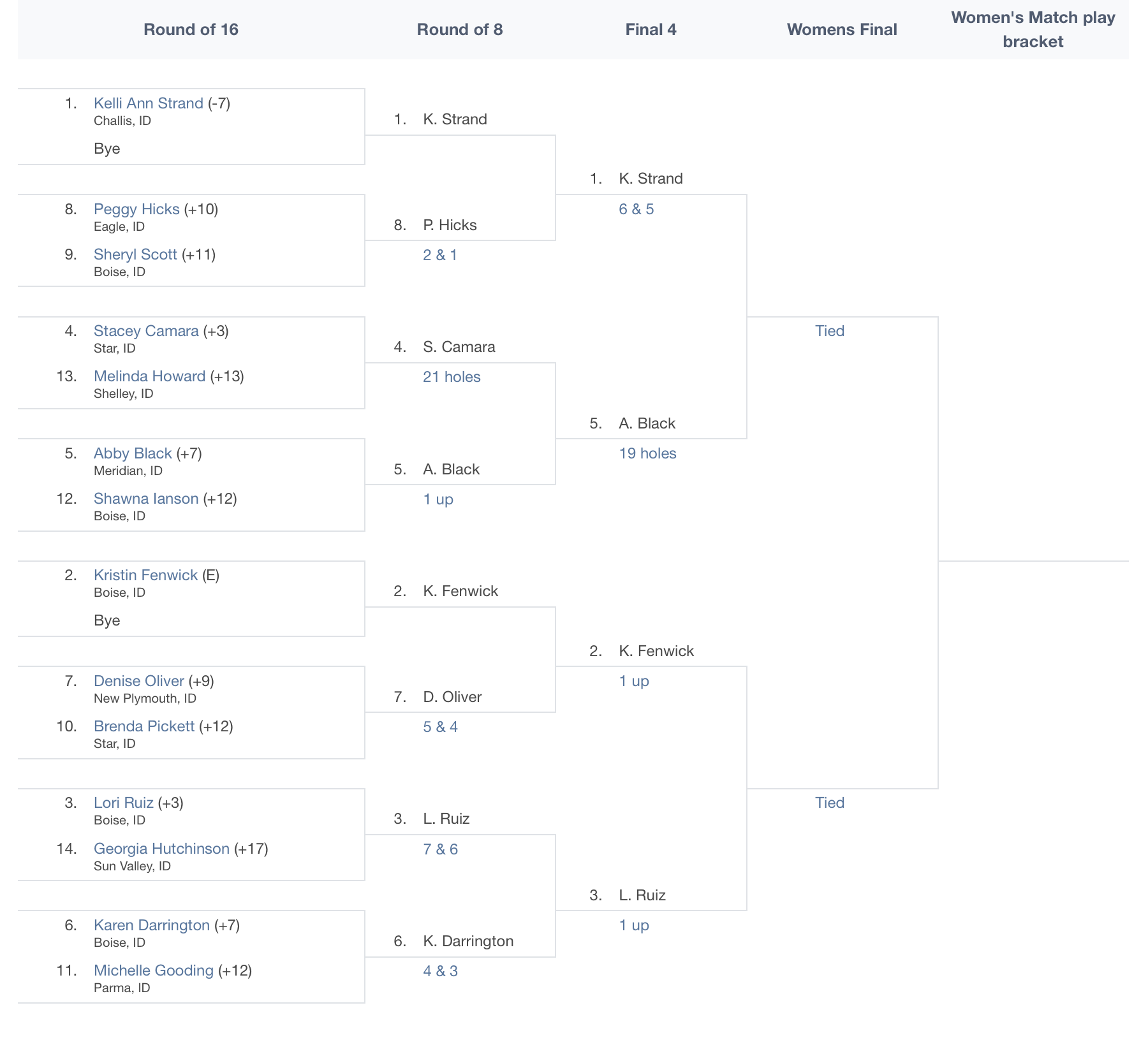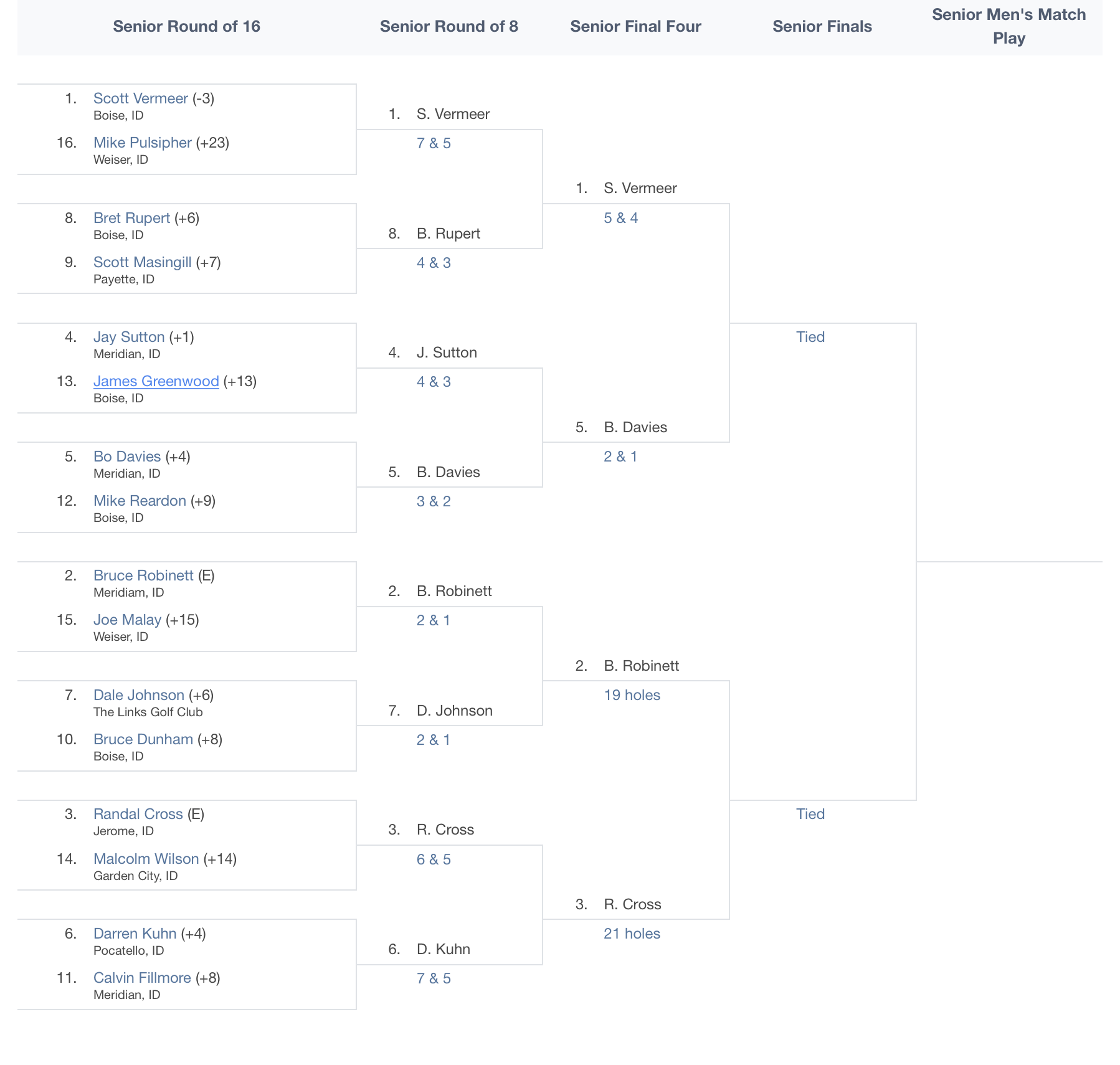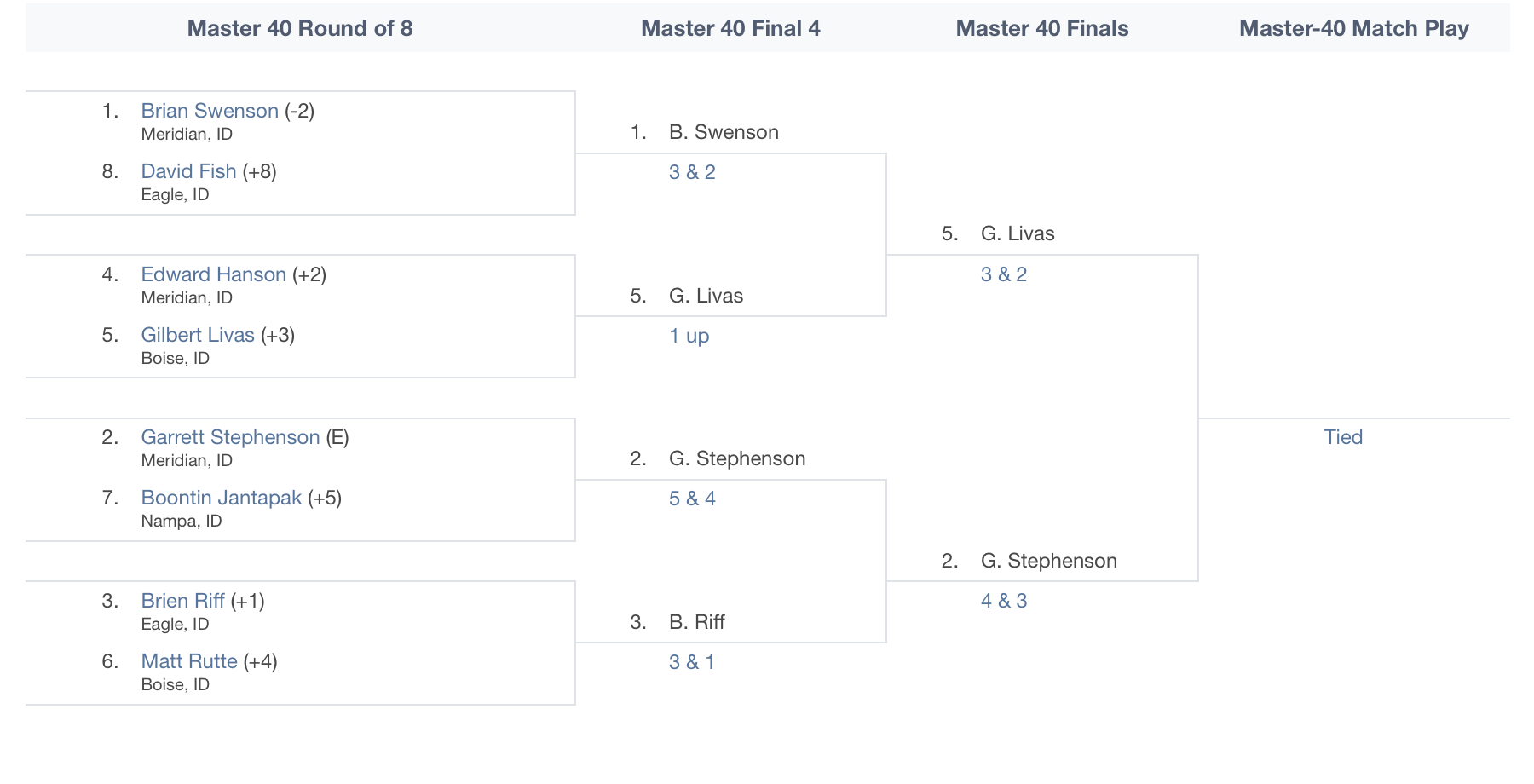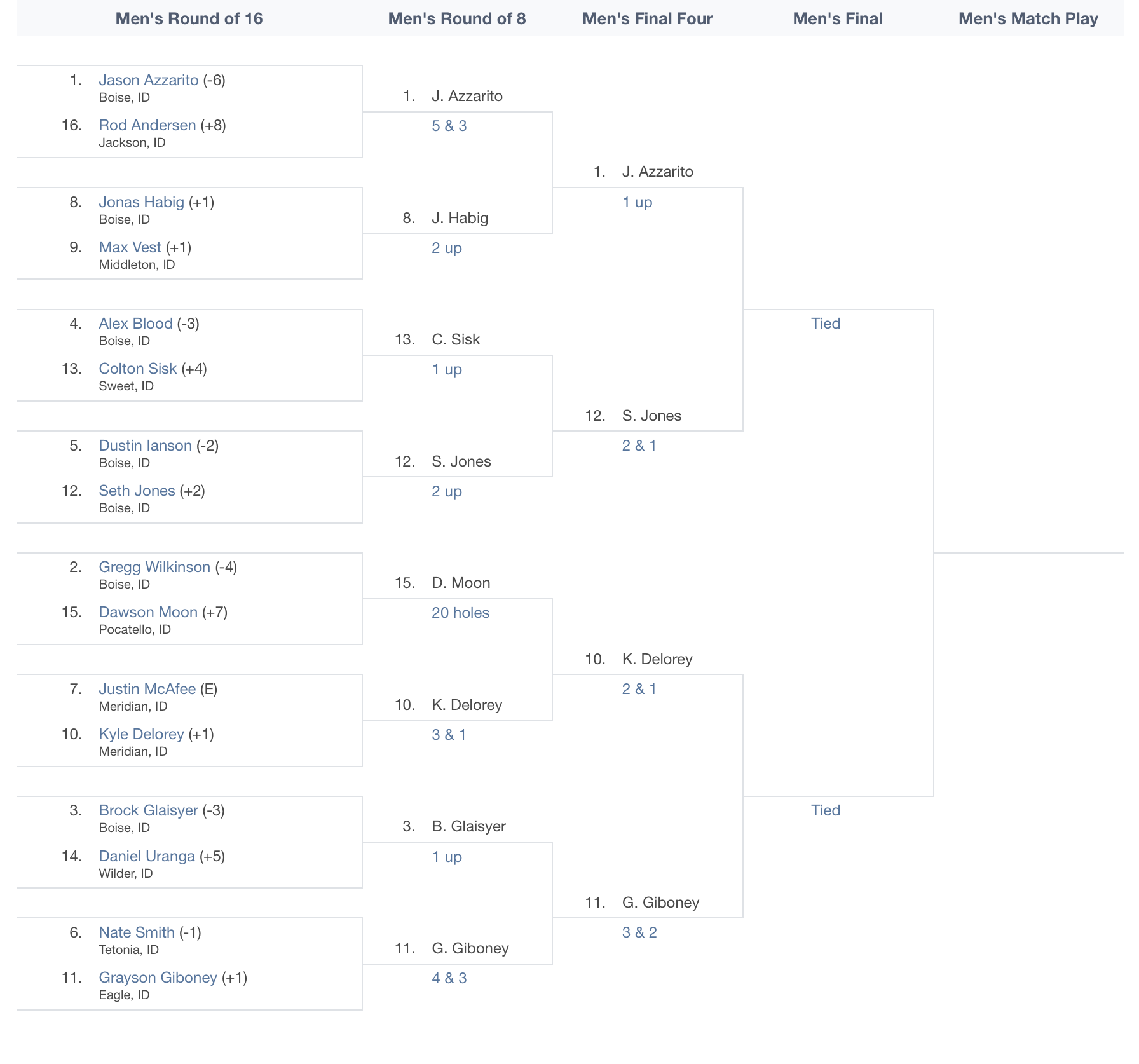Written by Beaux Yenchik, Manager of Media and Communications
JEROME, Idaho—It’s safe to say that no script was followed at this week’s Senior Amateur Championship. Two first-time winners hoisted their respective trophies, while the third held it like it was their first. For a field featuring the top senior players in the state, both men and women, age seemed to be less of a factor than one would have imagined. And for being one of the more recognized courses on the “rota” for the Idaho Golf Association, Jerome Country Club proved it was once again worthy to host such a tournament by keeping players at even par or higher about 97 percent of the time—only yielding five sub-par rounds to the field for the week.
Having to play extra holes to capture his victory, Scott Masingill went 73-69-72 for a total of 214 (-2).
Senior Men’s Division
Standing in the middle of the fairway on No. 17, each player in the final group watched his opponents stick their approach shots close to the pin—each golfer having a birdie putt that was less than 10 feet. Vermeer, the leader by one at this point, was the furthest from the hole. Stepping up to his putt, he soon watched his ball barely miss and what would have been a huge advantage going into the final hole. Moments later, Vermeer’s lead disappeared as Masingill and Stephen Hartnett sunk their birdies to tie for the lead.
"You really have to play this golf course from the fairway,” Masingill said. “You have to drive it straight. There is disaster pretty much around every corner.”
With all three tied for the lead, Masingill and Vermeer had each hit their drives in the fairway. Hartnett, who had had the lead earlier in the day, put himself behind a tree and was left with a nearly impossible shot to the green. As players waited to hit their second shots, the group was asked to wait as a ruling needed to play out—causing the three players to anxiously wait for 10 minutes to hit what were already nerve-wracking shots before the delay.
The best Hartnett could do was punch the ball out short of the green—leaving himself an awkward 30-yard shot into a tucked pin. Masingill and Vermeer both hit their second shots roughly 15 feet from the hole. Despite each having a chance to win with a birdie—Hartnett’s chip over the green had eliminated him from the winner’s circle—neither could find the bottom of the cup with their putts.
"If you are playing halfway descent and you go through kind of a lousy stretch, you are OK,” Masingill explained. “If you don’t have that confidence going in and you go through a lousy stretch, you can just completely fall apart. I have been in both places.”
Extra holes it goes.
Each made par on the first extra hole, despite Masingill nearly going out of bounds with his tee shot. On the second hole, both players found the fairway. Masingill, whose tee shot was roughly 25 yards behind Vermeer, played his second to roughly 60 yards from the hole—giving himself a perfect distance and angle to what was another tight pin. Vermeer followed up by pulling his second shot right into the rough. Immediately gaining the advantage, Masingill nearly holed out for eagle and soon after watched his ball drop for birdie and the win after Vermeer couldn’t recover.
"Vermeer is a very, very difficult guy to beat,” Masingill said. “He is really consistent, really tough, [and] a good competitor. I really had to kind of bear down the last couple of holes, and I was really able to hit the shots that I needed to hit.”
Masingill, who could be considered the G.O.A.T. when it comes to men’s golf in Idaho, had yet to etch his name on the Senior Men’s Amateur trophy until this point. At the age of 71, it is clear that he is not done yet and doesn’t plan on being done anytime soon.
CLICK HERE for the complete leaderboard.
Senior Men’s Division Payout
-1st Place Gross $550 Scott Masingill
-2nd Place Gross $400 Scott Vermeer
-3rd Place Gross $200 Stephen Hartnett
-4th Place Gross $100 Randal Cross
-1st Place Net $450 Bob Roberts
-2nd Place Net $300 John Austin
-3rd Place Net $150 Dan Pickens
-T4th Place Net $100 Bret Rupert
-T4th Place Net. $100 Steve Nelson

